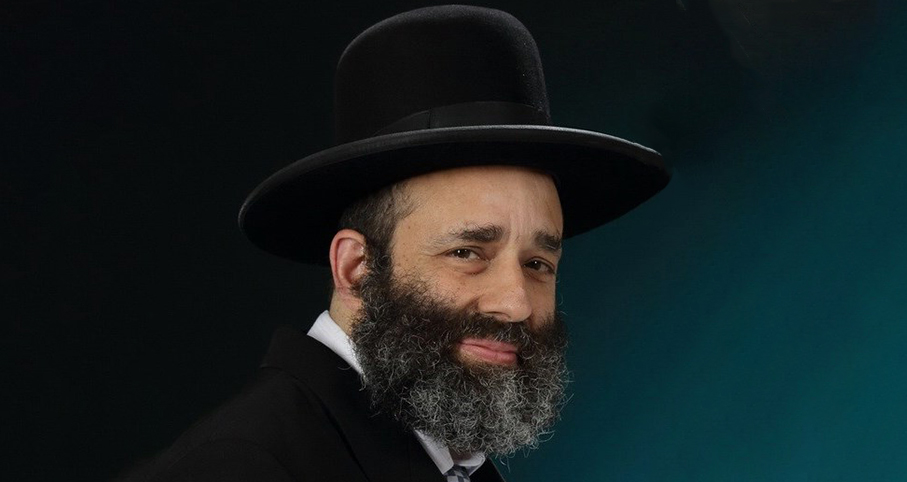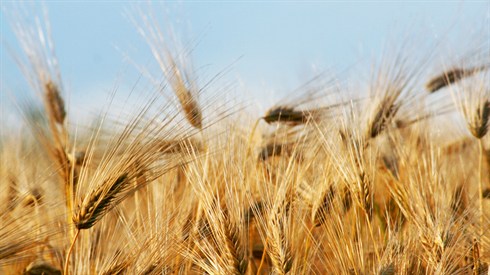45
If the word mincha means a "gift" or sometimes, more particularly, "an offering made from flour," why does this word refer exclusively to our afternoon prayer, rather than to any of our other prayers?"
Question #2: When Mincha?
"When is the optimal time to daven mincha?"
Question #3: What Mincha?
"What do the words mincha ketanah and mincha gedolah mean?"
Introduction
The Gemara in Brachos that I will cite shortly quotes a posuk from this week’s parsha as the source for our daily mincha prayer, providing an opportunity to discuss some of the laws concerning when one may begin davening mincha.
Why mincha?
But first, why do we call the prayer mincha? As our questioner noted, the word mincha means a gift, and the Torah uses the term mincha to refer to a grain offering, which could be offered at any time of the day. Some mincha offerings were voluntary, whereas others were required. Some were private offerings, such as the forty loaves that accompanied the korban todah, the thanksgiving offering. Others were korbanos tzibur, public offerings, such as the lechem hapanim that graced the shulchan in the Beis Hamikdash, the korban omer offered on the second day of Pesach, and the special shtei halechem that were offered on Shavuos.
Assuming that our daily afternoon prayer corresponds to the afternoon korban offered in the Beis Hamikdash (as we will soon discuss), that offering is called tamid shel bein ha’arbayim, the offering brought every afternoon. The term bein ha’arbayim means the afternoon, since it is after the sun begins its daily descent and beforesundown. The korban tamid was offered twice a day, in the morning, shacharis, and in the afternoon, bein ha’arbayim. Thus, since our morning prayer is called shacharis, shouldn’t we call the afternoon one bein ha’arbayim? And, even assuming that the prayer is called mincha because the tamid shel bein ha’arbayim was accompanied by a mincha offering, the morning tamid, also, was accompanied by a mincha offering, yet its corresponding prayer is called shacharis.
As you would imagine, I am not the first one to pose this question; about 800 years ago, it was raised by Tosafos (Pesachim 107a, s.v. Samuch), who provides two answers. Tosafos suggests that since korbanos mincha accompanied the two daily korbanos tamid, and the morning one is called shacharis, the afternoon korban was called mincha. Perhaps calling the afternoon prayer bein ha’arbayim was considered too unwieldy.
Tosafos presents a second approach, which is based on a Talmudic passage that refers to the prayer of Eliyahu on Mount Carmel as mincha. To quote the Gemara, "A person should always be careful concerning the mincha prayer, since Eliyahu was answered only with the mincha prayer" (Brachos 6b). Tosafos notes that Eliyahu prayed while the afternoon korban mincha was offered (see Melachim I 18:36), and therefore, the association of a successful prayer with the korban mincha was established– and the name stuck! Brachos
A different rishon, the Avudraham, suggests a third approach, which is based on the fact that Adam Harishon sinned in the afternoon – the same time of the day when we would be praying the mincha service. The Torah describes that Adam sinned leruach hayom, which Targum Onkelos calls manach yoma, the same word as mincha!
Thus, whereas according to both of Tosafos’ approaches the term mincha used for the afternoon prayer is borrowed from a different context, in Avudraham’s understanding, the word mincha does mean the afternoon.
Having answered the first of our opening questions, let us now begin an introduction that is needed to explain and answer the second question. "When is the optimal time to daven Mincha?"
Prayer origin
The Gemara (Brachos 26b) reports a dispute between amora’im regarding the origin of our three daily tefillos. Rabbi Yehoshua ben Levi ruled that tefillos were established to commemorate the daily korbanos offered in the Beis Hamikdash, whereas Rabbi Yosi ben Rabbi Chanina contended that they were established by the Avos. Specifically, Avraham Avinu established shacharis, Yitzchok Avinu created mincha, and Yaakov Avinu instituted maariv, each of which the Gemara derives from pesukim.
The Gemara then demonstrates that both Rabbi Yehoshua ben Levi’s approach and that of Rabbi Yosi ben Rabbi Chanina date back to the time of the tanna’im, and it concludes that both opinions are correct – the tefillos were established by our forefathers and, at the same time, our observance also includes a commemoration of the daily korbanos. This is evidenced by the halachic requirement to recite these tefillos at the times appropriate for offering their corresponding korbanos. In other words, the times governing when each tefillah should be recited match the time that the corresponding korbanos were offered in the Beis Hamikdash, and, before it was built, in the Mishkan.
Prayer deadline
The Mishnah (Brachos 26a) discusses the latest time that one may daven the various prayers, citing a dispute regarding the latest time for shacharis, the tanna kamma holding at midday and Rabbi Yehudah holding at one third of the day, two hours before midday. (This is the conclusion of the Gemara on 27a; the Gemara also concludes there that we paskin like Rabbi Yehudah.) Similarly, the Mishnah (Brachos 26a) cites a dispute as to the latest time that one can daven mincha.
However, the Mishnah does not mention when one may begin davening mincha. Instead, a beraisa quoted by the Gemara (26b) shares the following, seemingly incomplete, information: "When is mincha gedolah? After six and a half hours. And when is mincha ketanah? After nine and a half hours." The Gemara does not explain what halachic significance these two terms, mincha gedolah and mincha ketanah, have. From the context, it appears that each of these two terms refers to a time in the day, but from what point are we measuring 6½ hours and 9½ hours, and how long is the hour we are using in our measure? And, what halachic ramifications do these two times have?
Different hours!
Whereas our contemporary clock uses hours that are all exactly sixty minutes long, and each minute is also of the same, exact duration, this method of calculating time, although extremely accurate from one perspective, does not take into consideration the major event that defines our day – the path of the sun around the earth, or the earth around the sun.
As we all well know, the length of time of daylight varies greatly throughout the year, and sunrise and sunset always vary slightly from one day to the next. Chazal use a calculation of time that involves dividing the daylight hours into 12 equal units. These hours, which vary in length from day to day, are called sha’os zemaniyos (singular, sha’ah zemanis). As we will soon mention, there are different opinions whether we calculate this from halachic dawn, called alos hashachar, until nightfall (tzeis hakochavim, when the stars are visible) or from sunrise to sunset. For our purposes, let us assume that we consider sunrise to be the beginning, or "zero-hour" of our day, and sunset as the end of the twelfth hour. We now divide our day into twelve equal hours, but the length of each hour will vary throughout the year.
When is noon?
Calculating this way, the end of the sixth hour is always exactly midday, the point in the day when the sun is at its highest point and closest to being directly overhead. (In reality, the sun is never directly overhead, unless one is located somewhere near the equator, between the two tropics. North of the tropics, the sun is always in the southern half of the sky, rather than directly overhead.) This time of the day is sometimes called "high noon," which is the time of the day when the sun creates no shadow, and halacha calls it chatzos.
We should be careful not to confuse this with 12:00 noon on our clock. Twelve o’clock is rarely the actual time of chatzos; this is primarily because the creation of time zones caused the time on our clocks to diverge from the sun’s time. Standardized time zones were not formulated until the invention and common use of the railroad. Until that time, each city created its own time, based on sunrise and sunset in that city, and noon and high noon were identical. However, this system proved difficult to use when trains arrived on a schedule from a different city, where sunrise was earlier or later on a given day. In order that people could anticipate when the trains would arrive in their town, they created a system whereby people in different places would keep the same clock.
Mincha gedolah
Returning to the passage of Gemara in Brachos, the question is why the beraisa is telling us about two points of the day, called mincha ketanah and mincha gedolah.
The Rambam appears to have understood the beraisa to be explaining when is the earliest time to daven mincha, but provides two times. One, mincha gedolah, is the earliest possible time, whereas the other is the preferred time. In other words, the earliest time to daven mincha is at 6½ hours, although it is preferred for someone to wait until 9½ hours to daven mincha. This is because it is ideal to daven mincha later in the day and closer to sunset.
Other rishonim appear to have understood this passage somewhat differently from the Rambam (see Beis Yosef, Orach Chayim 233, citing Rosh and Tur), although there is not a significant difference in halacha between the two approaches. The Aruch Hashulchan explains that, even according to the Rambam, waiting until mincha ketanah to daven is not required, but only preferred. If there is a reason to daven at mincha gedolah, such as if one would like to begin a seudah, one may. Certainly, the exigencies of travel or employment allow one to daven at mincha gedolah, even according to the Rambam.
Clocking minutes?
When, on my clock, have we reached mincha gedolah? Assuming that I know when chatzos is, do I add thirty minutes to determine when is mincha gedolah? Or must I know exactly how long each sha’ah zemanis is today and add half of that to chatzos, which will make mincha gedolah either somewhat earlier or somewhat later than it is according to the 30-minute method, depending on the part of the year?
The Rema (Orach Chayim 233:1) rules that we use the calculation of sha’os zemaniyos. Notwithstanding that the Mishnah Berurah (233:4) accepts this conclusion, in his own notes on his rulings (Shaar Hatziyun), he queries that perhaps this should be determined by thirty clock minutes. Why?
As we mentioned above, the time for each prayer is based on a corresponding korban in the Beis Hamikdash. In the case of tefillas mincha, the corresponding korban could have been offered immediately after chatzos (see Mishnah Pesachim 61a). We wait an additional half hour to make sure that no one errs and offers it too early. Since the extra half hour is to make sure that a person does not miscalculate, perhaps its time should be thirty minutes, not dependent on whether the day is longer or shorter (see Rashi, Pesachim 93b). Should the hedge factor to avoid error vary according to season?
Therefore, the Mishnah Berurah implies he is uncertain whether this half hour should be zemanis or not. Because of this, the minhag in Yerushalayim, for example, is to be stringent in both directions. In winter months, when a sha’ah zemanis is less than an hour, the practice is not to daven mincha until thirty minutes after chatzos. In the summer months, when a sha’ah zemanis is greater than an hour, mincha gedolah is calculated on the basis of 6½ sha’os zemaniyos.
Davened earlier
What is the halacha if someone davened mincha between halachic midday and mincha gedolah, which is too early to daven? Must he daven again?
Based on the words of the Rambam and the Shulchan Aruch, the Magen Avraham concludes that he has not fulfilled the mitzvah and is required to daven again.
Rashi implies that he agrees with this position, when, in his comments explaining this beraisa in Brachos 26b, he writes: "If one would like to offer the afternoon tamid earlier than mincha gedolah, he may not, since the Torah says bein ha’arbayim, which means when there begin to be evening shadows, because the sun is now inclining to the western part of the sky. This is after 6½, since between 5½ and 6½, the sun is directly overhead."
This leads to the following question: The Mishnah (Pesachim 61a) states that the korban Pesach cannot be offered before noon, but implies that, if offered immediately after halachic noon, it is kosher. Yet, the time for both the daily afternoon tamid and the korban Pesach is expressed in the Torah by the same term, bein ha’arbayim. Thus, if the korban Pesach is kosher when offered at halachic midday, a korban tamid offered at midday should also be kosher. Therefore, the daily mincha prayer, which corresponds to the afternoon tamid, should be "kosher" when prayed at midday – in other words, it should fulfill the mitzvah, at least bedei’evid (Pri Megadim).
Although there are approaches to resolve this question, the Pri Chodosh and other acharonim dispute the conclusion of the Magen Avraham, concluding that someone who davened mincha after chatzos but before mincha gedolah fulfilled the requirement and does not daven mincha again (Pri Megadim, Mishbetzos Zahav 232:1 and 233; Aruch Hachulchan; Mishnah Berurah 233:2, quoting Beis Yaakov and Magen Giborim).
Tashlumim
There is a halachic rule that someone who missed one of the daily prayers should make it up during the next tefillah slot by reciting a second shemoneh esrei, immediately after davening the correct, appropriate prayer. For example, if someone missed mincha, then, immediately after reciting shemoneh esrei of maariv, he should recite a second shemoneh esrei, to make up the missed mincha. This replacement prayer is called tefillas tashlumim.
The following question is germane to someone who davened mincha too early; that is, he davened after chatzos and before mincha gedolah, in which case, according to the Magen Avraham, he is required to daven mincha again. What if the person did not daven the mincha again that day, does the Magen Avraham require him to daven a tefillas tashlumim for the missed mincha? Some contend that, in this situation, the Magen Avraham does not require a tefillas tashlumim. Their reason is that tefillas tashlumim does not replace the lost mitzvah of tefillah bizmanah, the prayer recited in its correct time, since that cannot be replaced – rather, a tefillas tashlumim replaces only a missing tefillah. But, in our situation, this individual davened – although he recited his prayer before mincha gedolah. Although he may have missed mincha bizmanah, nothing is gained from having him daven a make-up because he has already davened (Tenuvas Sadeh).
Mincha ketanah
I mentioned earlier the Rambam’s opinion that the optimal time to daven mincha is after mincha ketanah, which the beraisa teaches is 9½ hours of the day. How do we calculate "9½ hours of the day"?
As discussed earlier, there are various opinions how to calculate this, some measuring the day from alos hashachar until tzeis hakochavim and others from sunrise to sunset. The most accepted approach is to calculate the 9½ hours as measured from sunrise to sunset. In fractions, this is 19/24 into the sunshine part of the day.
Conclusion
Often, we are in a rush – there is so much to do, I need to get to work – and we know, all too well, the yetzeir hora’s methods of encouraging us to rush through davening. We all realize that davening properly requires reading slowly and carefully, and that the power of tefillah is very great. Through tefillah one can save lives, bring people closer to Hashem, and overturn harsh decrees. We have to believe in this power. One should not think, "Who am I to daven to Hashem?" Rather, we must continually drive home the concept that Hashem wants our tefillos, and He listens to them! Man was created by Hashem as the only creation that has free choice. Therefore, our serving Hashem and our davening is unique in the entire spectrum of creation.
Understanding how much concern Chazal placed in the relatively minor aspects of davening should make us even more aware of the fact that davening is our attempt at building a relationship with Hashem. As the Kuzari notes, every day should have three high points – the three times that we daven. Certainly, one should do whatever one can to make sure to pay attention to the meaning of the words of one's Tefillah. We should gain our strength and inspiration for the rest of the day from these three prayers. Let us hope that Hashem will accept our tefillos, together with those of Klal Yisrael!
This Shiur is published also at Rabbi Kaganof's site

The Musaf of Rosh HaShanah
Rabbi Yirmiyohu Kaganoff | Elul 5768
Birkat Kohanim – The Priestly Blessing
Chapter Twenty-Part One
Rabbi Eliezer Melamed | 5775

Separating Challah
Rabbi Yirmiyohu Kaganoff | Sivan 17 5776








